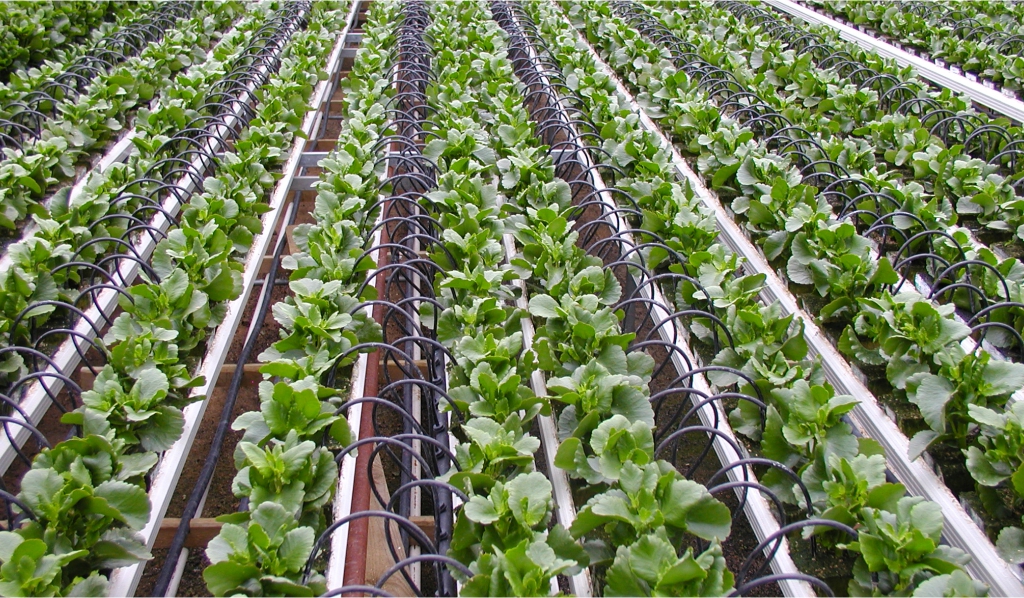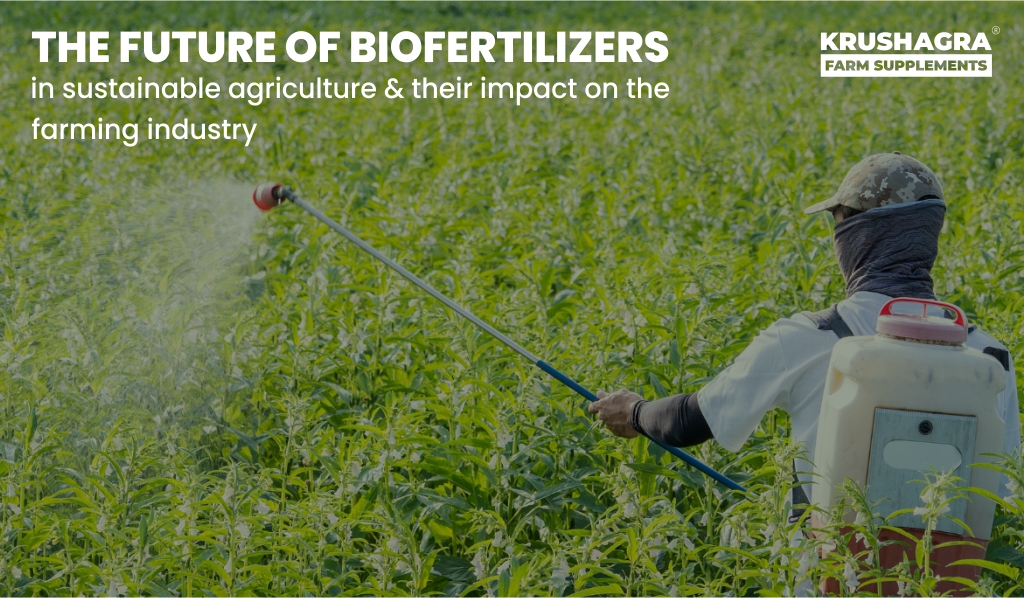As the demand for food production rises globally, the agricultural sector is turning more and more towards sustainable practices, to be able to ensure productivity, health of the ecosystem, and economic stability in the long-term.
Biofertilizers are an essential part of this change, as it has offered an eco-friendly alternative to conventional chemical fertilizers. What exactly does the future look like for biofertilizers, and how will they continue to impact this industry?
Understanding Biofertilizers and Their Benefits
Biofertilizers are natural substances, which contain only beneficial microorganisms (bacteria, fungi, or algae). These microbes work to enhance soil fertility by increasing the availability of essential nutrients to plants, promoting growth, and supporting sustainable crop production.

Key benefits of biofertilizers include:
Enhanced Nutrient Availability: Biofertilizers contain microbes that facilitate the release of nutrients like nitrogen, phosphorus, and potassium into forms that plants can absorb easily. Nitrogen-fixing bacteria, for instance, convert atmospheric nitrogen into nitrates that are essential for plant growth.
Improved Soil Health: Biofertilizers promote soil structure by increasing microbial activity, helping to break down organic matter, and encouraging the formation of humus. This leads to improved water retention, aeration, and root development.
Reduced Environmental Impact: By minimizing the need for synthetic fertilizers, biofertilizers help lower greenhouse gas emissions, prevent soil degradation, and reduce leaching and runoff that harm waterways.
Cost Efficiency: For many farmers, biofertilizers often showcase a cost-effective alternative to synthetic fertilizers, which are prone to price instability. Biofertilizers help reduce overall costs while maintaining and even improving crop yields.
The Role of Biofertilizers in Sustainable Agriculture
Supporting Soil Biodiversity and Health
Biofertilizers introduce beneficial microorganisms that work symbiotically with plants, which assist in nutrient cycling. This, in turn,improves the soil’s capacity to hold nutrients, making the soil more resilient and less reliant on external inputs. They contribute to a balanced microbial ecosystem, which supports soil fertility over the long term too.
2. Enhancing Crop Resilience
Biofertilizers have shown potential in improving crop resilience against diseases, pests, and environmental stressors like drought. Certain biofertilizers contain microbes that help plants develop stronger root systems and enhance their capacity to tolerate adverse conditions.
3. Reducing Chemical Dependency
Farmers can significantly reduce the amount of chemical fertilizers they use, which is essential for sustainable farming as it reduces the risk of soil and water contamination and the buildup of harmful residues that can damage ecosystems.
In areas where over-reliance on chemical fertilizers has led to soil degradation, biofertilizers offer a path to restoring soil health and supporting sustainable farming practices.
4. Contributing to Carbon Sequestration
Some biofertilizers, particularly those that encourage the formation of stable organic matter (humus), play a role in carbon sequestration. By fostering healthy soil that can capture and store carbon, biofertilizers contribute to efforts to reduce greenhouse gas concentrations in the atmosphere.
Recent Advancements in Biofertilizer Technology
1. Improved Strain Development
Biotechnology has enabled the development of more efficient microbial strains tailored to specific crops and soil types. Through genetic engineering and microbial selection techniques, scientists are creating biofertilizers that perform well in varied conditions, delivering nutrients precisely when needed.
2. Encapsulation and Formulation
Recent advancements in encapsulation technologies have improved the shelf life, stability, and application efficiency. Encapsulation protects the microbial content from environmental stress during storage and application, ensuring that the biofertilizer remains effective when applied to fields.
This has expanded the commercial viability of biofertilizers, as farmers are more likely to adopt products that can be stored and applied easily.
3. Integrated Nutrient Management Systems
Biofertilizers are increasingly being used in integrated nutrient management (INM) systems, where they are combined with organic and inorganic fertilizers to maximize nutrient efficiency.
INM systems help maintain soil health, provide consistent nutrient availability, and reduce input costs by allowing farmers to use a lower quantity of chemical fertilizers.
4. Data-Driven Precision Agriculture
Digital technology and data analytics are transforming agriculture, enabling more precise application of inputs. By analyzing soil conditions, crop types, and environmental factors, precision agriculture tools can optimize the timing and dosage of biofertilizers, ensuring they are used effectively.
This minimizes waste and improves productivity, providing both economic and environmental benefits.

Challenges of Biofertilizers in Mainstream Agriculture
1. Variable Efficacy
One challenge with biofertilizers is their inconsistent efficacy in different environmental conditions. Unlike chemical fertilizers that release nutrients predictably, biofertilizers have to rely on living organisms that may respond differently (based on soil pH, moisture, temperature, etc).
Developing strains that perform consistently across varied environments is essential to enhancing biofertilizers’ reliability.
2. Limited Awareness
Many farmers, particularly in regions with limited access to modern agricultural information, are unaware of biofertilizers and their benefits. Extensive educational efforts and training are required to make farmers comfortable with biofertilizers and help them understand how to integrate them into their practices effectively.
3. Regulatory and Standardization Issues
The biofertilizer market lacks standardization, making it difficult to guarantee product quality. Some biofertilizers on the market may contain fewer active microbes than advertised or may not be suitable for specific crop types.
Regulations and quality control measures are needed to ensure that farmers receive effective and reliable products.
4. Shelf Life and Storage
As living organisms, biofertilizers have a limited shelf life and can degrade if not stored properly. Advances in encapsulation and preservation are helping to address this issue, but more progress is needed to ensure that biofertilizers remain viable through various storage and distribution conditions.
The Future Impact of Biofertilizers on the Farming Industry
1. Moving Towards Organic and Regenerative Agriculture
Biofertilizers are well-suited to organic and regenerative farming systems that prioritize soil health and biodiversity. As consumer demand for organic produce rises, biofertilizers will likely become essential inputs, allowing farmers to cultivate high-quality crops without compromising environmental standards.
2. Supporting Small-Scale Farmers
For small-scale farmers who may not have the financial resources to invest in synthetic fertilizers, biofertilizers offer a cost-effective solution.
The government and NGOs, likewise, are already promoting biofertilizers in many regions to support food security, reduce poverty, and improve local environmental conditions. The increase in subsidies can help small farmers adopt biofertilizers and improve their crop yields sustainably.
3. Reducing Dependency on Synthetic Fertilizers
The agriculture industry could reduce its dependency on synthetic fertilizers, which are associated with high energy consumption, carbon emissions, and quick depletion of resources.
Over time, this shift could lead to lower production costs for farmers, as well as reduced environmental impact and less sensitivity to the price fluctuations.
4. Environmental Incentives
As governments and organizations worldwide look to mitigate climate change, biofertilizers may become part of carbon credit schemes or environmental incentives. Farms that adopt sustainable practices, including the use of biofertilizers, could receive financial benefits or credits, creating further economic incentives for sustainable agriculture.
To Sum it Up
The future of biofertilizers in sustainable agriculture is bright, with their role expected to expand as farming practices shift towards sustainability and resilience.
Biofertilizers offer a natural, effective alternative to chemical fertilizers, supporting healthier soils, reducing environmental impact, and helping farmers improve crop yields sustainably.
While challenges remain—such as standardization, efficacy, and education—ongoing advancements in biotechnology and agricultural practices are making biofertilizers more accessible and reliable.
As the farming industry moves towards sustainability, biofertilizers will be an essential tool in building a greener, more resilient food production system.
Frequently Asked Questions
How do biofertilizers contribute to sustainable agriculture?
Biofertilizers destroy harmful components from the soil that attack it and cause diseases in plants. By using biofertilizers, plants can also be protected against drought and other restrictive conditions without the harsh effects of chemicals.
This also works to retain the health of the soil, the crops and water resources which may otherwise wash away and contain harmful chemical residue.
What are microbial biofertilizers in sustainable agriculture?
Biofertilizers include living or biologically active products i.e microbial inoculants of bacteria, algae and fungi. These are present separately or in combination, too. They are able to enrich the soil with elements such as nitrogen, phosphorus, organic matter etc.
As microbials work on the smallest possible level, they have the advantage of long-term improvements as well.
What are the future prospects of biofertilizers?
With increased awareness and encouragement aimed towards farmers, biofertilizers are estimated to be used more and more over the next decades, with the agricultural industry turning increasingly towards adjacent sustainable practices at the same time.
What is the impact of biofertilizers on the Indian agricultural industry?
The Indian agriculture scenario is constantly being changed by this nature-friendly biofertilizer to establish a healthy farming pattern without relying extensively on chemical fertilizers.
For India, it is very essential, as excessive use of fertilizer contributes hugely to soil degradation and ultimately brings forth other environmental issues. The costs of farming are reduced, which brings considerably more business to small farmers, and supports the shift towards environment-friendly agriculture in India.





